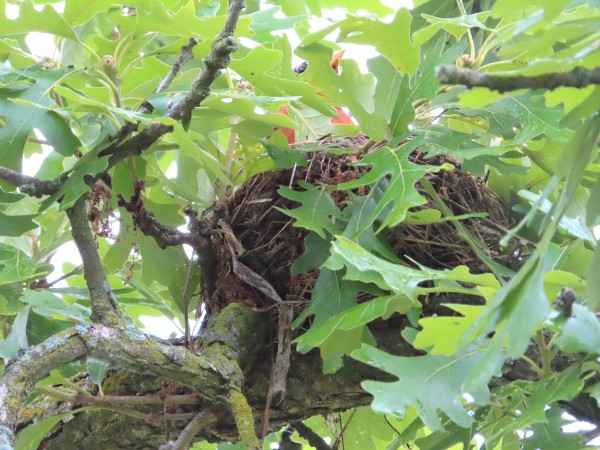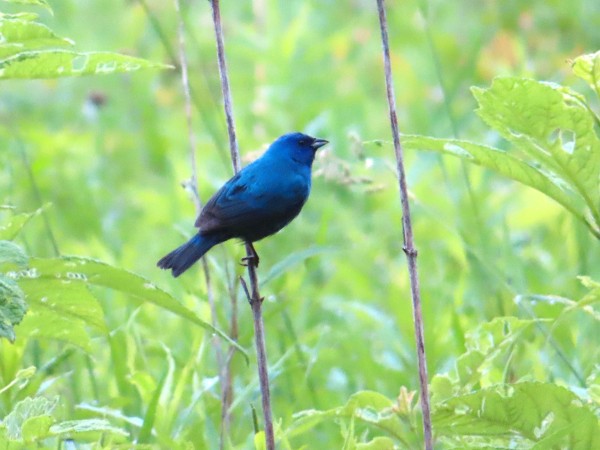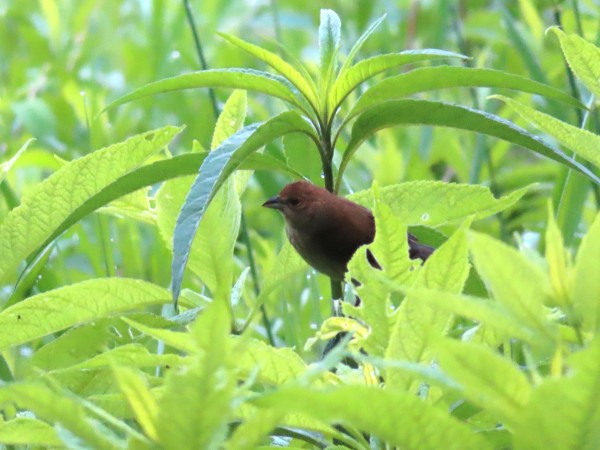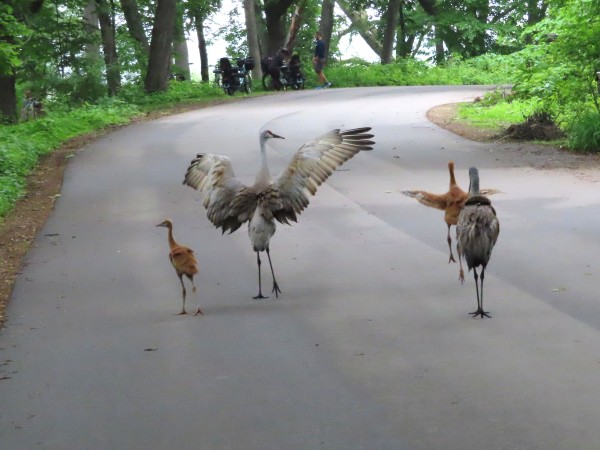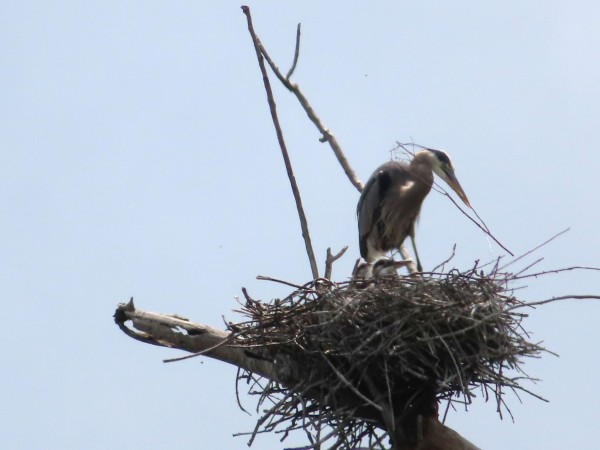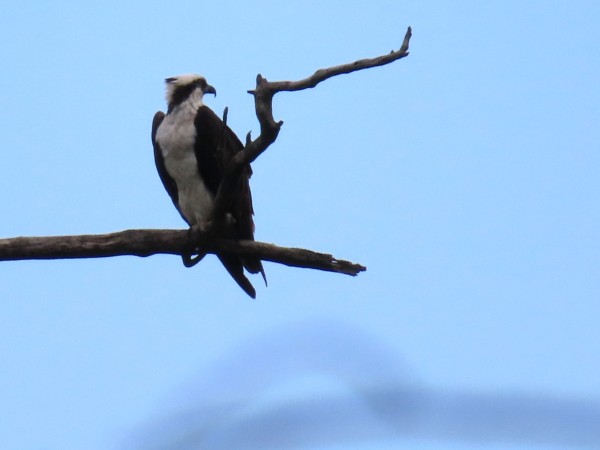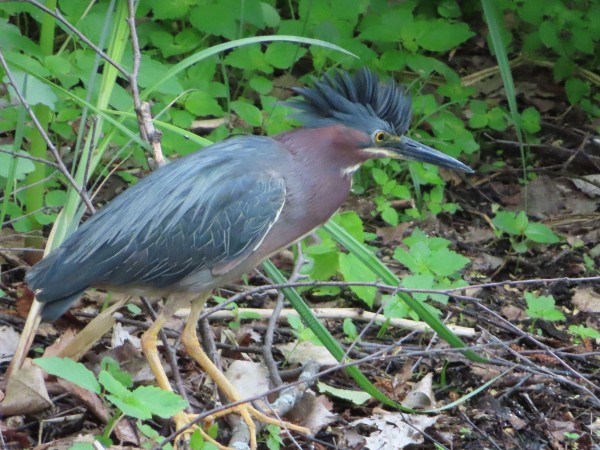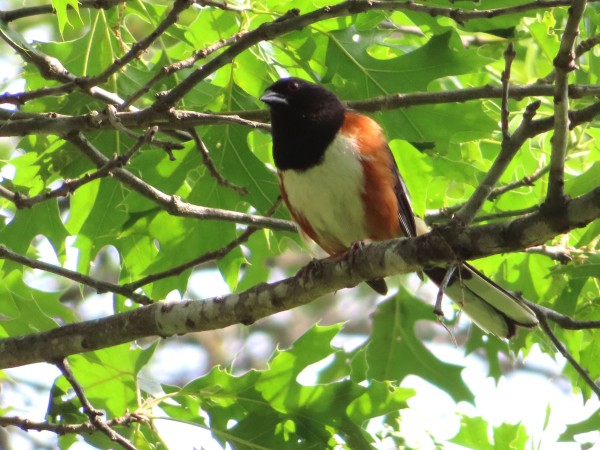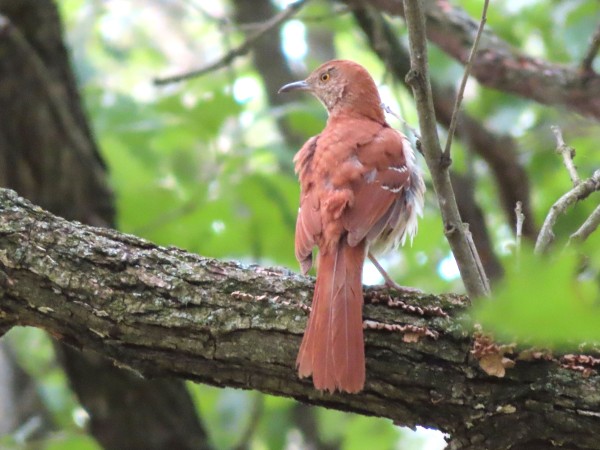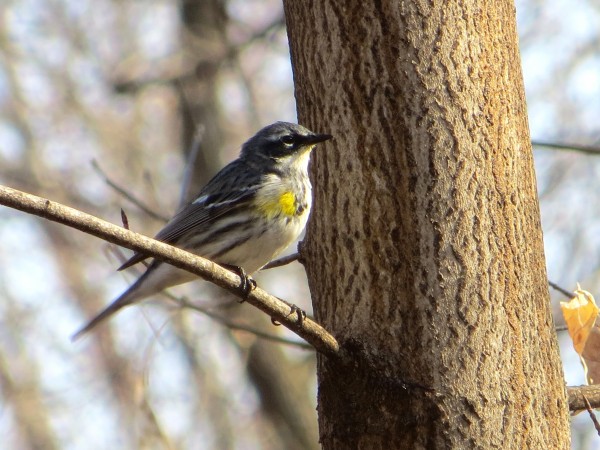Chuck's Birding Report #117
I’ve enjoyed putting together weekly reports of my adventures birding at the UW–Madison Arboretum and other points in Dane County. I’d love to find out what you value about these reports. Please help me out by filling out a very short survey. Your answers will be completely anonymous. To get to the survey, click here.
06 June - 13 June 2022
Dear fellow flock of birders,
What were the birds doing in the Arb this past week?
The birds are very active laying eggs in nests, feeding hatchlings in the nests as well as feeding the fledglings after they leave the nests. The nests are well hidden so I don’t often see them. I did see an American Robin with a beak full of worms so I followed it to its nest where it fed several open-mouthed nestlings. I only saw a bit of that activity because of all the leaves that surround the nest. Included is a photo of the adult robin at the nest. It’s keeping an eye on me.
I saw an adult Eastern Bluebird feeding two white speckled fledglings. By the way, the fledglings of most birds constantly follow the adults around patiently waiting to be fed. Some fledglings are not patient so instead flutter their wings demanding to be fed. Other fledglings vocally demand food.
Another fascinating activity is courtship behavior. This precedes what I described above. One of those behaviors is males feeding females. I’ve seen male Northern Cardinals feeding female cardinals. A couple days ago I saw one Cedar Waxwing feed another. I assume it was a male to a female. It’s a good way to attract a mate.
On Sunday I was walking north of Teal Pond and saw a beautiful, dark blue, male Indigo Bunting acting a bit differently in the prairie just south of the Junipers in Juniper Knoll. It would land on the tan stalk of a wildflower from last year, shimmy down the stalk, grab some food from the ground and return to the middle of the stalk. Another bird, brown in color, would come by and be fed by the male Indigo Bunting. After close looks at the other bird, it turned out to be a female Indigo Bunting. Male and female Indigo Buntings have completely different colored plumages resulting in sexual dimorphism. This is the first female I’ve seen this year. It took me a long time to be able to identify the female Indigo Bunting. Included are two photos of the different sexes of Indigo Buntings. I was not able to capture the feeding of the male to the female.
I think the end of the story about the Sandhill Cranes who nested on Teal Pond is that the nest was predated. There have been no sightings of parents with colts in the area nearby but I am seeing Sandhill cranes without young out on Curtis Prairie and even around the Visitor Center. On the other hand the pair of Sandhill cranes with colts near Skunk Cabbage Bridge seem to be doing very well. On Sunday I saw the foursome climb from the creek near Skunk Cabbage Bridge up to the road. The colts have really grown. The parents decided to take the colts for a run on Arboretum Drive. Not only that but they flapped their wings showing the colts the beginnings of flying. The colts with their wimpy wings covered with fluffy down-like feathers flapped their wings too. It was quite a show. When will the adults teach the kids about the danger of cars on that road? Included is a photo of one adult and one colt with wings spread. All four eventually were flapping their wings but I missed that photo.
After the bird walk last week I went to Gardner Marsh to see how the three Great Blue Heron nests in the rookery were doing. I walked along Arboretum Drive and was able to see 2 of the 3 remaining nests in the rookery. If you recall there were 6 nests last year and 12 nests before that. The two nests I saw had one adult standing in each nest. I think I could see two young lying down in one of the nests and maybe one in the other nest. Included is a photo of the one nest with an adult Great Blue Heron standing with a stick in its beak trying to make the nest stronger for the two young who will grow much larger.
I also looked at the Osprey nest not far from the heron rookery. I saw one Osprey perched on a bare branch not far from the nest. It was difficult to see the nest but I did see an adult on the nest. I haven't seen any young yet but hope to see one or two soon. A photo of the perched adult is included.
Speaking of herons, I have seen Green Herons around the shores of Pond 2 and Teal Pond. We see flyovers as well. The included photo is of a Green Heron I saw at Olbrich Garden not far from the creek on the south side. Most often they have very smooth tops to their heads but once in a while they raise their crests and that is what I captured in the included photo.
Today I birded in the Grady Tract of the Arboretum. It is located on the south side of the Beltline and has some very different habitats there. I encourage you to take a walk on the Grady Tract to see what birds and wildflowers grow in the sandier soil there. The two main birds I saw there were several Eastern Towhees and a couple Brown Thrashers. Both species were vocalizing. I know the Eastern Towhees nest there. In past years I’ve seen a couple nests in stick piles on the ground. I didn’t know that Brown Thrashers nested there but maybe they do now because of some changes that have been made in the habitats at Grady. The included photo of the male Eastern Towhee shows the black upper parts and black hood. The under parts are white and the sides are orangey brown. The tail has black feather with white corners.
Also included is a photo of the Brown Thrasher showing mostly its upper side. All of the upper side is an orangey brown color. It has a long tail. We can see the side of the head with its relatively long down-curved beak and the yellow iris of the eye. Not shown is the white underside with dark streaks and spots.
That’s the Arboretum bird report for the past week.
I wish all of you good health and good birding too,
Chuck

